How To Connect a Phone to a Non-Smart TV? Wired & Wireless Solutions
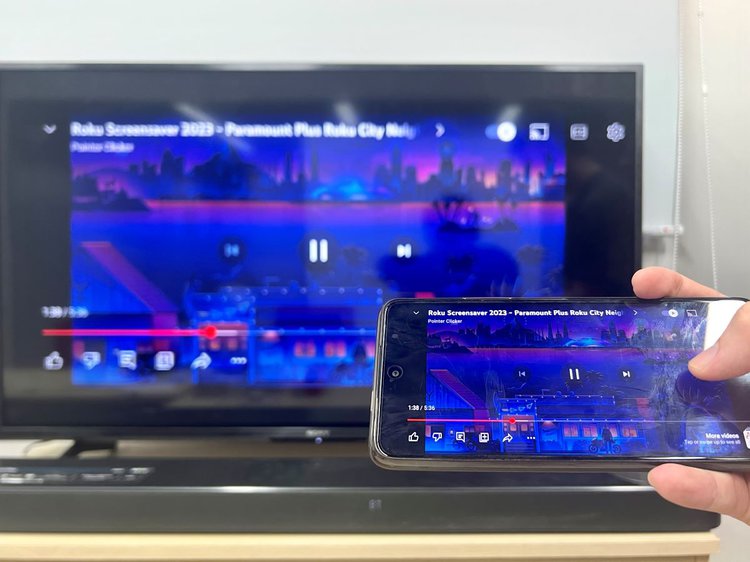
What To Know
- For wired connections, use appropriate HDMI adapters (Lightning, USB-C, Micro USB, Micro HDMI, Mini HDMI) to connect your HDMI-enabled smartphone to your non-smart TV.
- Wirelessly cast or mirror your phone’s content to a non-smart TV using streaming devices like Roku, Apple TV, Fire TV Stick, or Chromecast, ensuring both devices are on the same Wi-Fi network.
Our succinct guide illuminates seamless solutions for connecting your phone, wirelessly or wired, to your non-smart TV.
Discover the simplicity of HDMI adapters and streaming devices like Roku and Chromecast, ensuring a flawless display of your mobile content on a larger screen.
No more technical guesswork; just straightforward, user-validated methods to elevate your viewing experience.
Quick Navigation
How to Connect a Smartphone to a Non-Smart TV Using the HDMI Adapters (Wired)
Before setting up one of the wired connections listed below, it’s imperative to verify that your smartphone supports an HDMI connection. Otherwise, your TV will not be able to receive and display its AV signals.
If you haven’t already checked that your smartphone is HDMI-enabled, head over to our article Which Phones Have HDMI Outputs To Connect to a TV (or Projector)? for a step-by-step guide on how to do so.
Note: These methods use an HDMI adapter, which can also be used to connect your smartphone to a smart TV.
1. Use a Lightning to HDMI Adapter
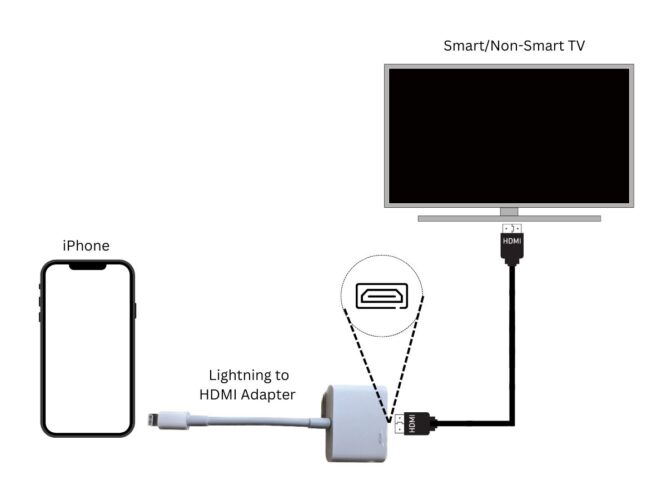
Materials:
Instructions:
Step 1: Plug your lightning to digital AV adapter’s lightning connector into your iPhone.
Step 2: Plug one end of an HDMI cable into the adapter’s HDMI port and the other end into your TV’s port.
Step 3: Change the TV input to that HDMI.
2. Use a USB-C to HDMI Adapter/Cord
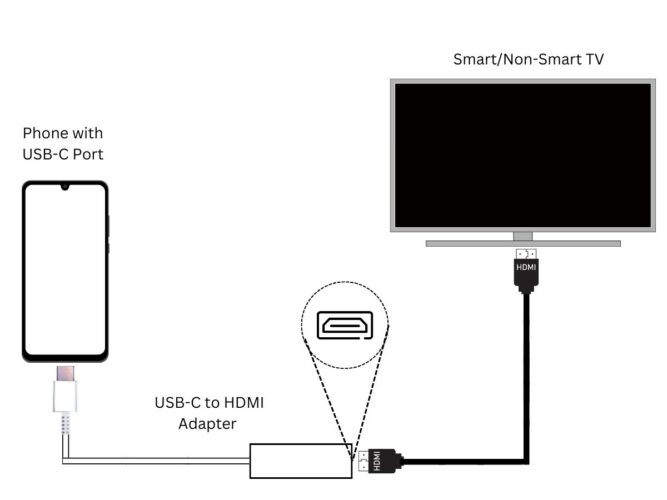
Materials:
Instructions:
Step 1a: Connect the USB-C to HDMI adapter’s attached USB-C cable to your phone.
Step 1b: OR, plug the USB-C to HDMI cord’s USB-C connector into your phone and its HDMI connector into your TV.
Step 2: Switch your TV’s input to that HDMI.
3. Use a Micro USB to HDMI Adapter

Note: This solution can only be used with MHL-compatible smartphones and TVs with an MHL-enabled HDMI port. MHL is not the same thing as HDMI, so if you’re unsure if your smartphone supports this function, search for its model number on the official MHL website.
Materials:
Instructions:
Step 1: Connect the micro USB to HDMI adapter’s attached micro USB cable to your smartphone.
Step 2: Plug one end of an HDMI cable into the adapter and the other into your TV.
Step 3: Change your TV to the proper HDMI input.
4. Use a Micro HDMI (HDMI Type D) to HDMI Cable
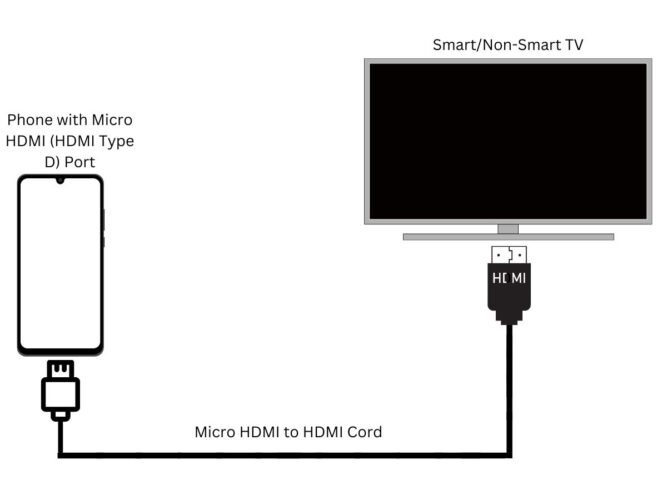
Materials:
Instructions:
Step 1: Plug the cable’s micro HDMI connector into your phone’s power port before connecting the cable’s HDMI connector to your TV.
Step 2: Then, change your TV’s input to the correct HDMI port.
5. Use a Mini HDMI (HDMI Type C) to HDMI Cable
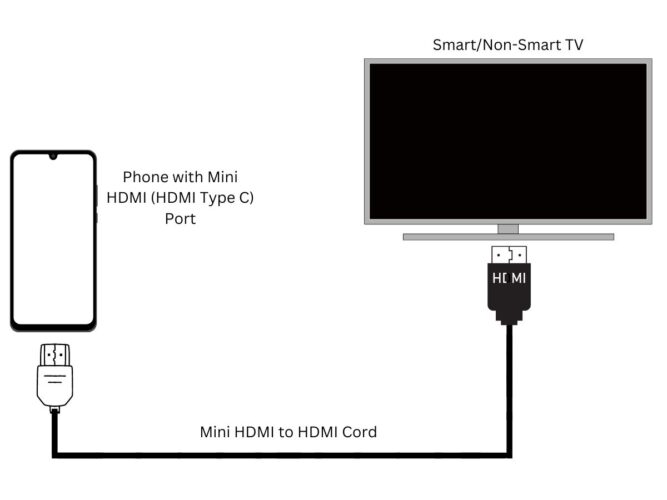
Materials:
Instructions:
Step 1: Connect the cable’s mini HDMI connector to your smartphone and the HDMI connector to the TV.
Step 2: Adjust your TV’s input to the same HDMI port your phone is connected to.
How to Cast (or Mirror) a Smartphone to a Non-Smart TV Through a Streaming Device? (Wireless)
Non-smart TVs do not support casting since they can not be connected to the Wi-Fi network.
However, you can still wirelessly connect your phone to them using a streaming device. This device connects to your TV’s HDMI port, though it can also be plugged into other ports as well using an adapter.
If your dumb TV doesn’t have a functioning HDMI port, check out our guide How to Connect a Roku Player to a TV Without the HDMI Port? for instructions on how to hook up a streaming stick to it.
1. Cast onto a Roku Streaming Player
Many Roku users (myself included) find Roku devices to be the easiest to cast in comparison with the other streaming sticks found in this list.
Before following the instructions below, ensure your Roku is connected to your TV’s HDMI port and a stable power source.
Android Phones
Step 1: Connect your Roku device and smartphone to the same Wi-Fi network.
Step 2: Pull up your phone’s Quick Settings menu by swiping down on the screen before opening an option labeled “Screen Cast,” Smart View,” or something with a label similar to “cast” or “mirror.”

Step 3: Tap your TV name in the device list.
Step 4: Complete the pairing process by confirming the connection on your Roku before casting to your heart’s delight!
iPhones
Step 1: Check that your Roku and iPhone are securely connected to the same Wi-Fi network.
Step 2: Go to your Roku’s Settings and open Apple AirPlay and HomeKit. Then, set up your Roku’s AirPlay function by following the instructions on-screen.
Step 3: Go to your iPhone’s Control Center by swiping down (or up on older iPhones) on the screen. Then, head to the Screen Mirroring option.
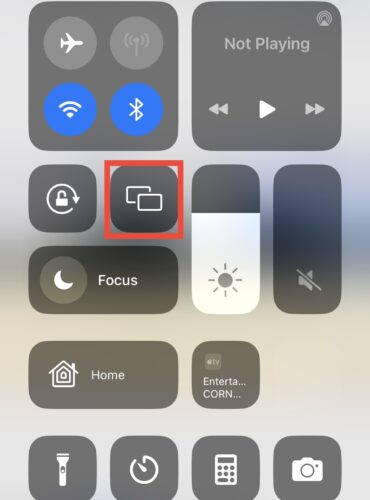
Step 4: When your Roku’s name pops up in the device list, tap it
Step 5: Type the AirPlay code that appears on your Roku into your iPhone. Now, your iPhone’s screen will be visible on your TV.
2. Cast onto an Apple TV
Apple TV is Apple’s dedicated streaming device. So, naturally, it works best with iPhones, allowing iOS users to easily connect their devices to their Apple TVs as long as both devices are connected to the same Wi-Fi.
Step 1: Ensure your Apple TV and iPhone are connected to the same Wi-Fi network.
Step 2: Open your iPhone’s Control Center by swiping down (or up depending on your iPhone model) on the screen. Then, go to Screen Mirroring.
Step 3: Tap on your Apple TV name in the device list.
Step 4: Take note of the AirPlay code on your Apple TV and correctly type it into your iPhone. Now you’ll be able to see your iPhone’s screen on your TV.
If you have an Android phone, you must use a third-party app to cast its screen on your Apple TV. Check out this detailed guide for instructions on how to do so.
3. Cast onto a Fire TV Stick
Android Phones
Step 1: Ensure your Fire TV Stick and Android smartphone are connected to the same Wi-Fi network.
Step 2: Launch the Quick Menu by long-pressing the Fire TV remote’s Home key. Then, navigate to Screen Mirroring.

Step 3: Swipe down on your Android phone to access the Quick Settings menu. From here, find an option like “Screen Cast,” “Smart View” (on Samsung phones), or something similar to “cast” or “mirror.”
Step 4: In the available devices list, select your Fire Stick’s name to start casting your phone’s content on your TV.
iPhones
Casting content from an iPhone to a Fire TV Stick is a slightly more involved process as you must install the AirScreen app on your Fire TV. Follow the steps below to install and use this nifty app.
Step 1: Verify that your Fire TV Stick and iPhone are both connected to the same Wi-Fi network.
Step 2: Navigate to the Fire TV Home screen and go to Find, marked by a magnifying glass icon. Then, click on Search.
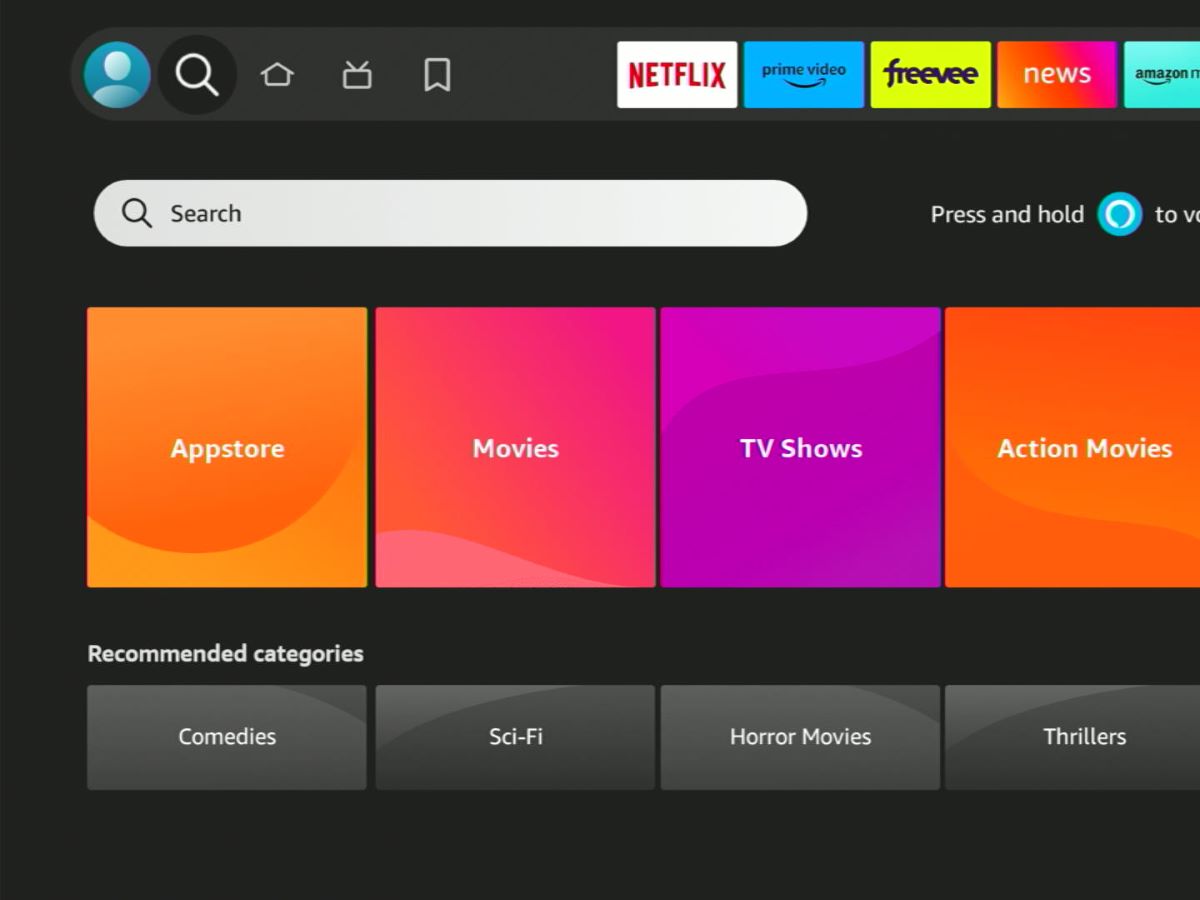
Step 3: Type AirScreen into the search bar, and when it pops up, Get it.
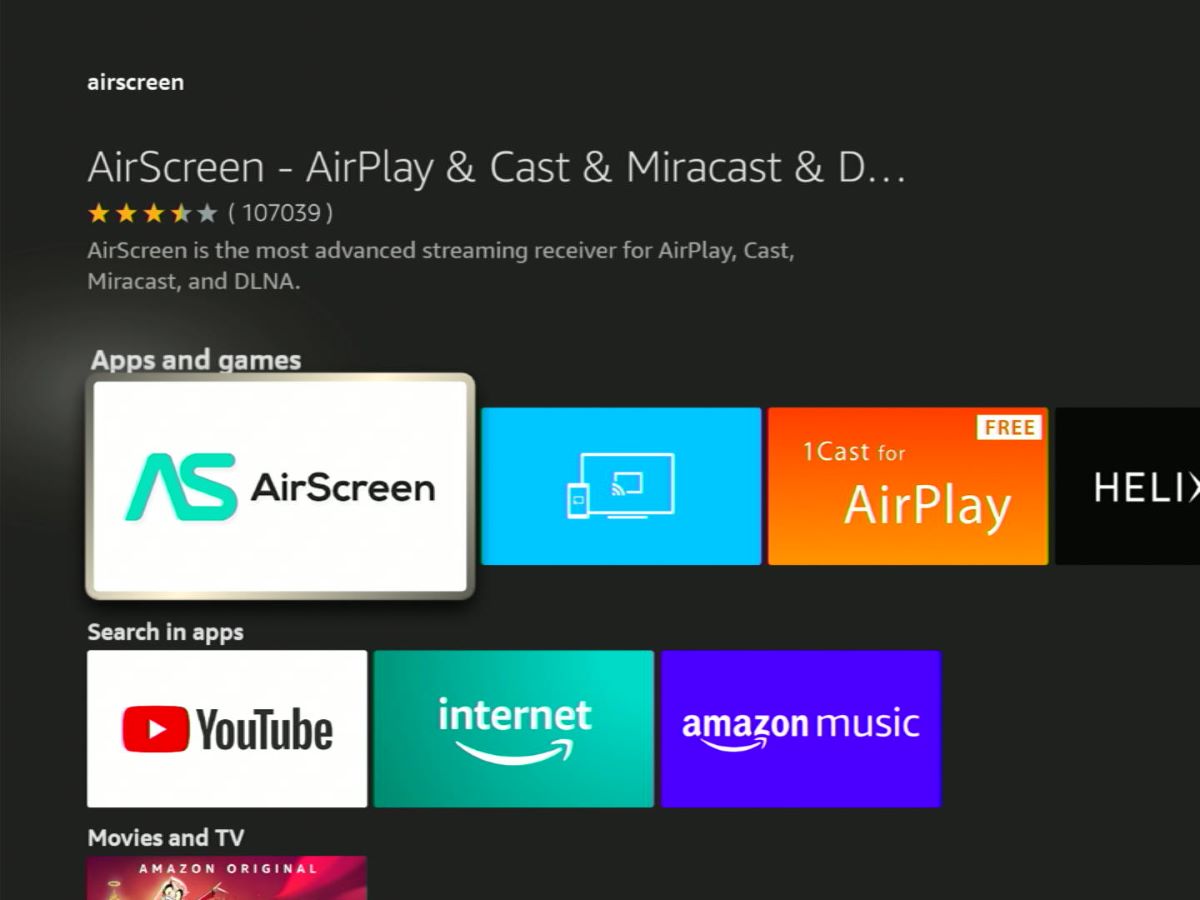
Step 4: Once installed, launch the app. From here you can follow the on-screen instructions or simply skip when prompted to the below step.
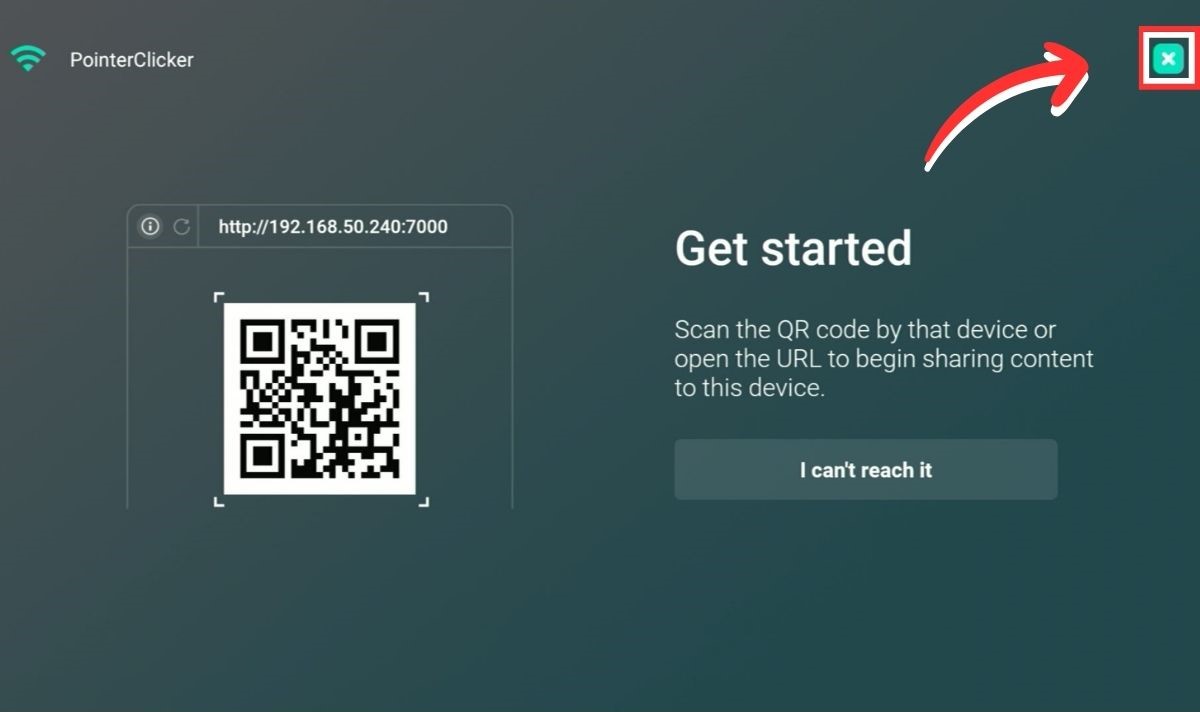
Step 5: Then, you must enable the app’s AirPlay function.
1. Head to AirScreen’s Settings. Note down the Device name, it will appear as the AirPlay name later.
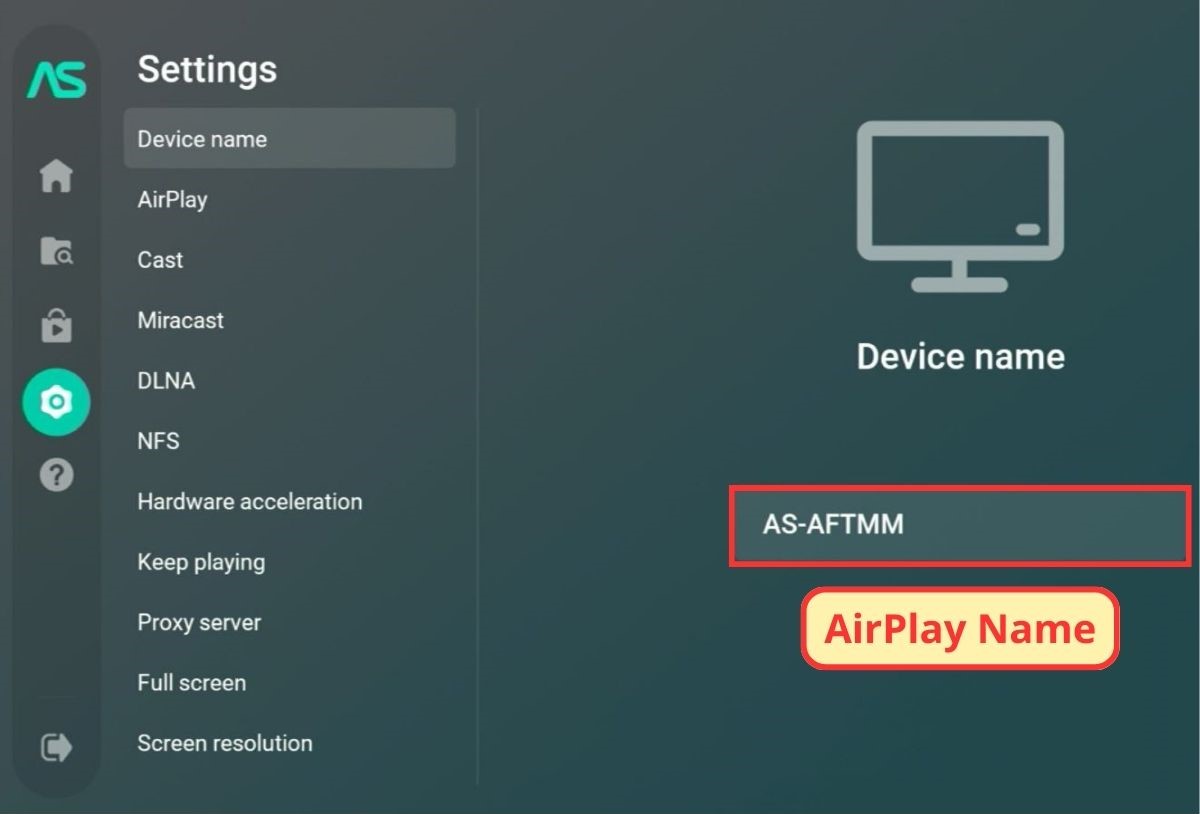
2. Go to AirPlay and tick the ON box.
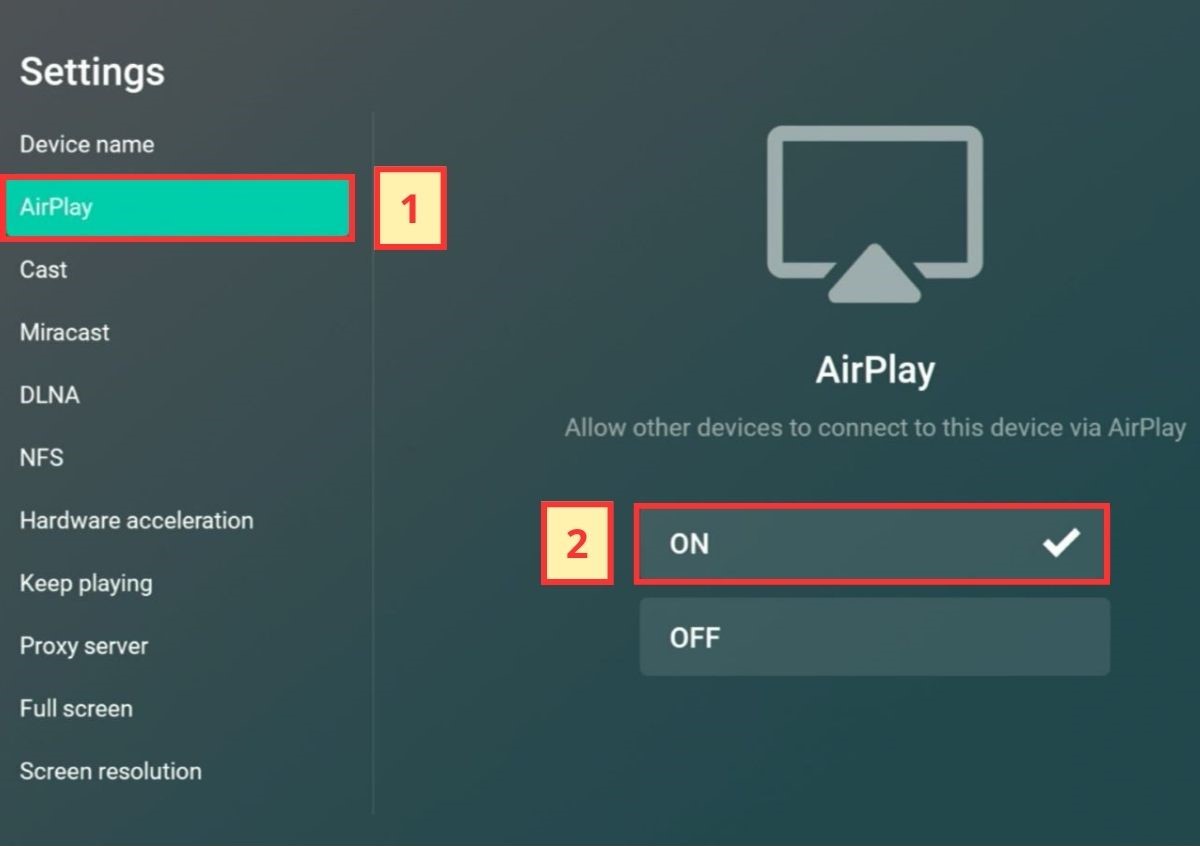
Step 6: Then, turn your attention to your iPhone, swiping down (or up depending on the model) to open the Control Center. Then, select the Screen Mirroring option.
![]()
Step 7: Find and select the Airscreen name you’ve noted above.
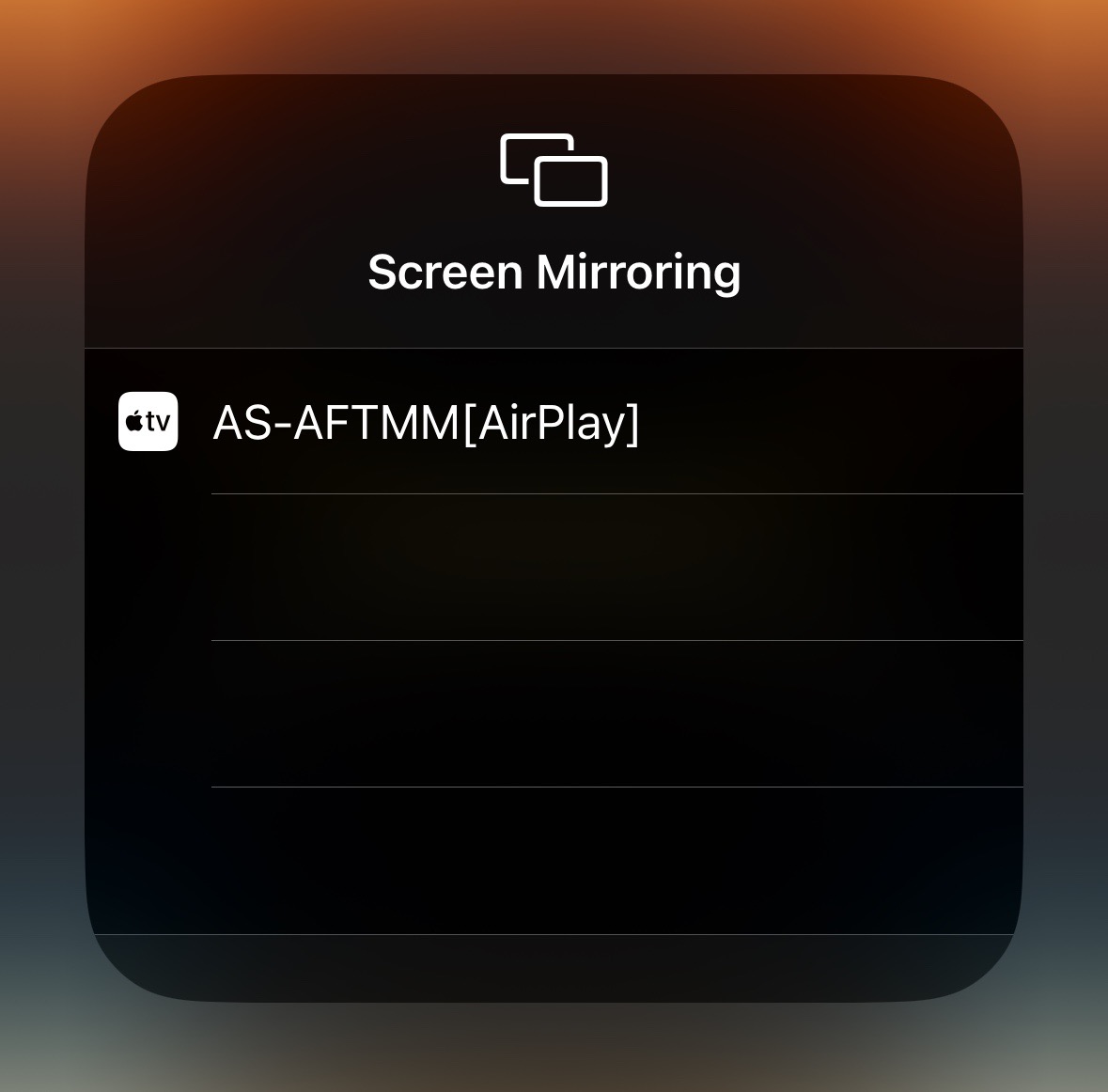
Step 8: When you see the AirPlay code on your TV, enter it into your iPhone to start casting its content.
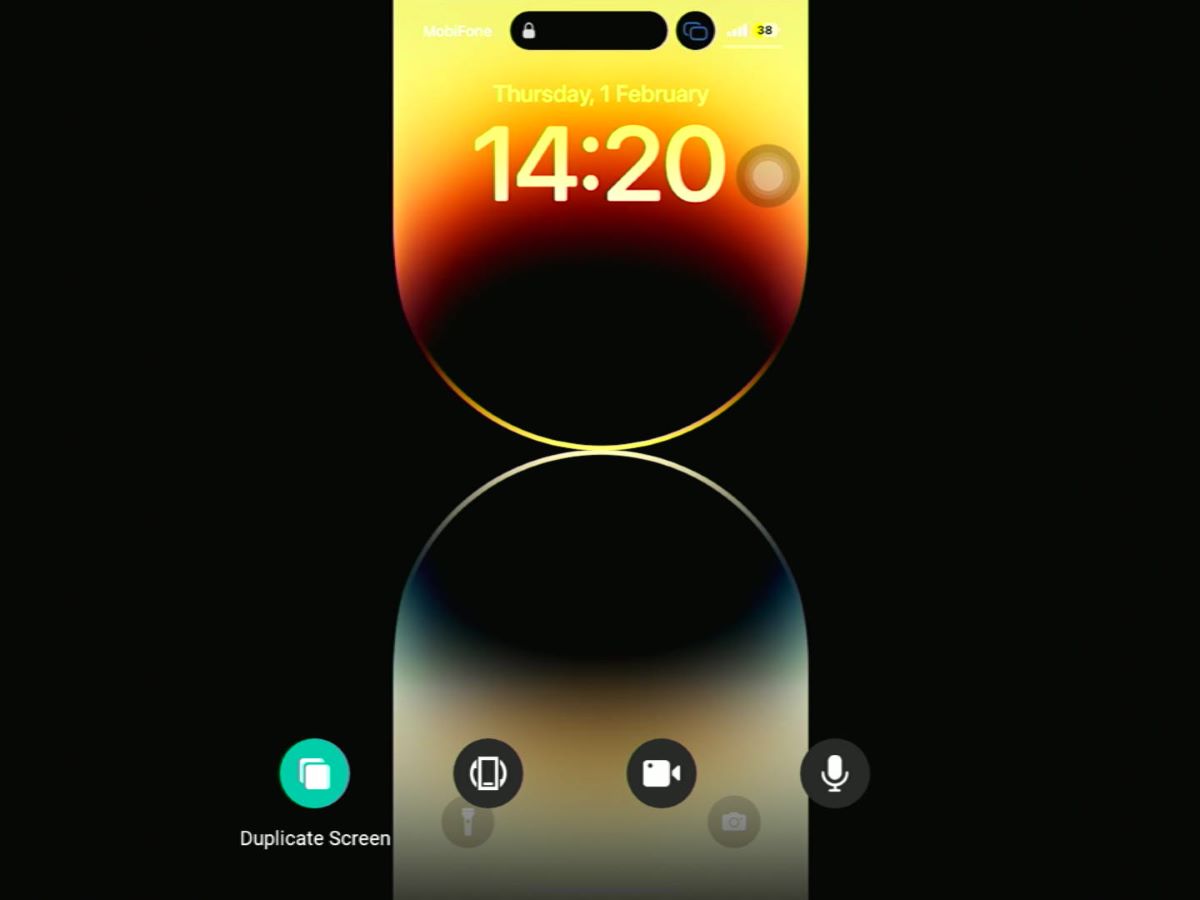
4. Cast onto a Chromecast or Chromecast with Google TV
Only for Android Phones and Chromecast with Google TV
Step 1: Confirm that your Chromecast with Google TV and Android phone are connected to the same Wi-Fi network.
Step 2: Launch the Quick Settings menu by swiping down on the screen. Look for an option related to “cast” or “mirror,” such as “Screen Cast” or “Smart View” (for Samsung smartphones).
Step 3: When your Chromecast with Google TV name pops up, select it.
Step 4: When prompted, confirm the connection on your TV before casting your phone’s content.
For Both Android Phones and iPhones
Step 1: If you haven’t done so already, set up your Chromecast on your TV. If the Chromecast is connected to a different Wi-Fi network from the last time you used it, press the button on the device to factory reset it.
Step 2: Download the Google Home app on your Android or iPhone and open it accordingly.
Step 3: In the app, sign into your Google account (i.e., Gmail).
Step 4: Head to the + icon in the top left corner of the screen.

Step 5: Tap Add another home to create a new Home for your Chromecast. Then, click on Next.
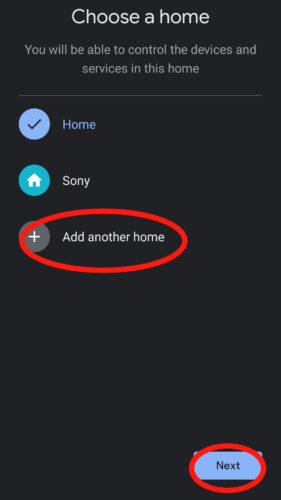
Step 6: Go to Set up a device, followed by New device.
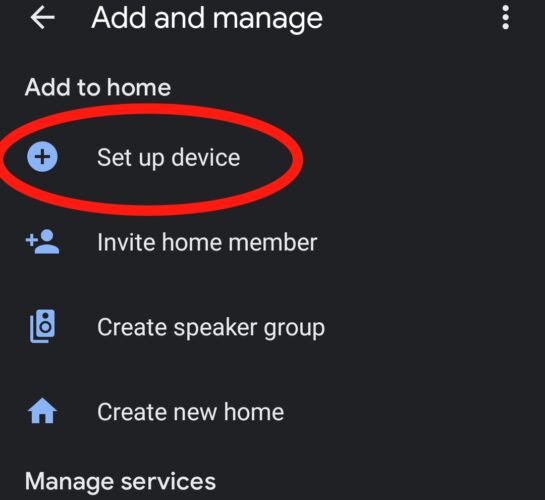
Step 7: Tap on the Home you’ve just made for your device, before selecting Next.
Step 8: Turn on the Location and Bluetooth functions on your phone.
Step 9: Once the app has located the Chromecast, tap Yes.

Step 10: Click on Connect before confirming the app’s code matches the one on your TV by tapping Yes.
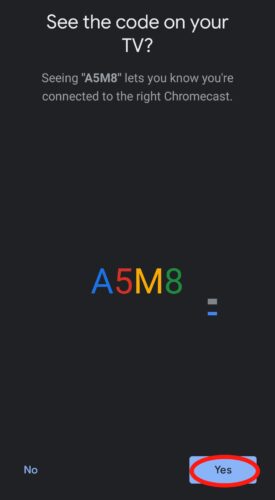
Step 11: Follow any additional on-screen instructions to complete the setup process.
Step 12: In the Google Home app’s Home screen, tap on your Chromecast’s name.
Step 13: Then, select Cast my screen followed by Cast screen.
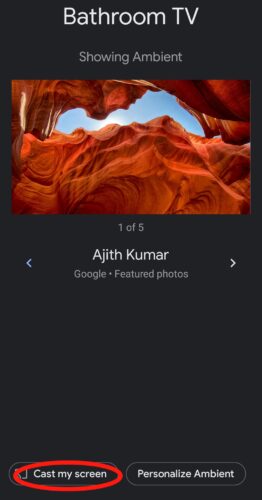
Wrapping Things Up
Your non-smart TV may not have all the fancy features a smart TV does, but that doesn’t mean you can’t cast or mirror content to it. There are several wired and wireless ways you can cast specific content from your smartphone or mirror its entire screen.
While wired connections can be set up with or without Wi-Fi, you must have a stable Wi-Fi network to wirelessly cast/mirror content to your dumb TV. So, you must invest in a streaming device or a proper adapter, as a non-smart TV does not natively support casting since it can not connect to the internet.
What’s your experience connecting a smartphone to a non-smart TV? Do you prefer wired or wireless connections, and why?
Let us know in the comments below!
Yesenia Achlim is a technical copywriter and editor with a focus on AV equipment. She aims to break down complicated topics and make technology accessible, no matter your technical expertise. When she’s not teaching you how to replace a projector lamp, you can find her reading and baking.



Great explanation of this issue.
Do I need an app on my phone to do this or does the phone (Samsung G8) have the built in ability to do this?
Is there an app that will enhance the phone’s performance on this task.
Thanks.